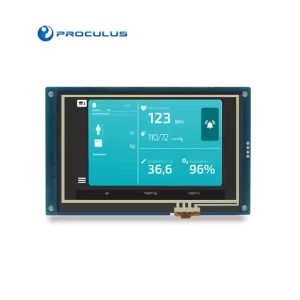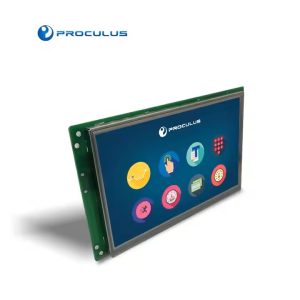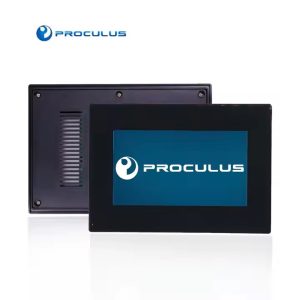Working Principles and Application Areas of an UART Screen
UART and USRT are two opposing concepts, just like single-lane and multi-lane roads. UART communication involves transmitting each byte of data in a bitwise manner to the other end of the data line. On the other hand, USRT, as the name suggests, transmit data in parallel to the receiving end, but do not run multiple UART port protocols simultaneously. In fact, UART data transmission is more complex in terms of logic. Parallel and UART ports are completely different transmission methods. For digital circuits, if a section of full-color 800*480 real-time image exceeds 30fps, parallel communication must be used for data transmission because the data payload of UART communication cannot compare with that of parallel communication, such as in the application of reversing images. Generally speaking, the design of a monochrome UART screen will use IIC or TTL, while the interface of a color UART screen may be more diversified and customized depending on the situation.
Why not use USRT to replace all UART? One reason is that USRT are more expensive, but this is not the main reason. In digital circuits, there are only two logic voltage levels, 1 and 0, and they can only be direct current. This creates difficulties for long-distance transmission, as DC signals attenuate faster during transmission and require signal compensation. If USRT were used, signal compensation would be even more expensive.
Working Principle of UART Display
An UART display cannot handle the amount of data from a parallel device, so the content of the displayed images and programs are mostly pre-written and burned into the module’s memory, rather than controlled by the MCU. The MCU then sends instruction sets to the UART device to schedule tasks, such as changing the contents of fixed text, displaying hidden layers, moving the position of a control element, and adjusting the backlight power.
The advantage of industrial UART displays is that the TFT module has a very sophisticated graphic operating environment. All display content can be processed by the module alone just by sending scheduling instructions, and the MCU does not need to send display content data frame by frame to the screen. This allows for more design options, and low-power MCUs and excellent ARM-based MCU are compatible. For simple MCUs like the 51 single-chip microcomputer, the process is simplified. It only needs to respond to the external device’s interrupt and send instructions to the TFT module, after which the MCU no longer needs to worry about the rest.
In fact, many people think that the slow data transmission of an UART display cannot meet the repeated assignments of many variables, such as the master control screen of factories with multiple devices. However, if the display requirements of the project are thoroughly understood, shortcuts and optimized coding can be found. Apply for as few global variables as possible, and write more conclusive code snippets. If the same operation rules are used, there must be a way to create them in the same scene to reduce the waste of code space. The conciseness of the algorithm may not be achieved by everyone, but it is not difficult to write a well-thought-out and suitable code snippet.
Application Fields and Directions of UART Display
The application of UART displays is very extensive, whether it is monochrome or color, dot matrix or segment code. These display devices can be found in factories and households alike. Color displays are more commonly used in medical equipment and consumer electronics, as well as some exploration equipment and handheld instruments. The use of segment code LED or LCD readings to analyze analog signal sources is now rare. In the future, UART display modules provided by TFT display suppliers will be used in more industrial switches, detection and control products, medical beauty products, public safety, and smart home products.

 English
English


